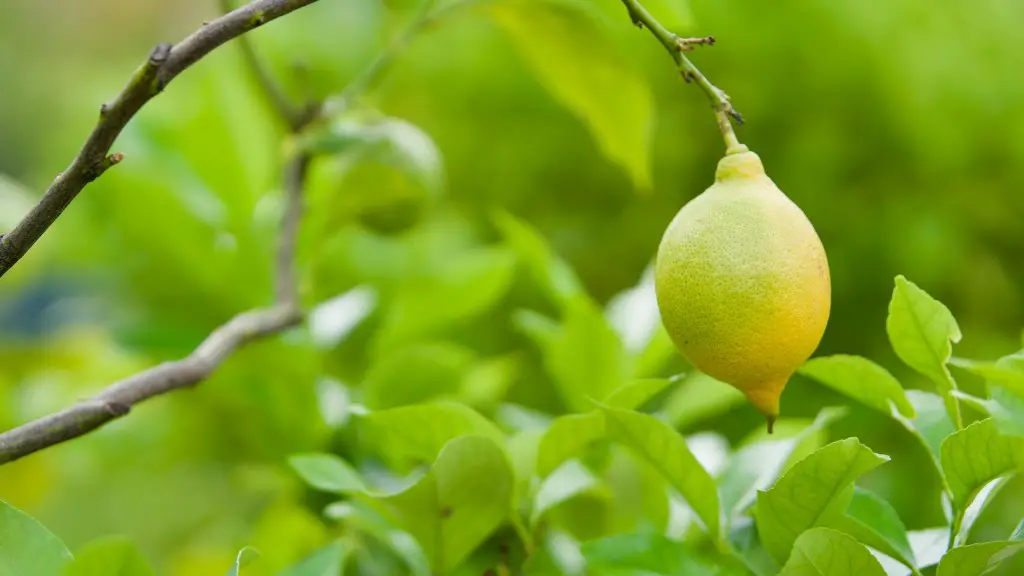Covering a lemon tree from frost is an essential part of maintaining its health and productivity. Here are the steps you need to consider to ensure its protection.
First and foremost, it’s important to identify when the plant is at risk of frost. For example, if the air temperature outside drops below freezing, then it’s likely there’s a risk of frost. In this case, you should take steps to protect your lemon tree from the cold weather.
Then, decide how you want to cover your tree. You can either use a fabric cover or purchase frost cloth from a gardening store. Both options will effectively protect the tree from frost.
Next, you’ll need to secure the cover. Place a wooden stake in the ground next to the tree and drape the cover over the stake. Make sure that the cover covers the entire tree and reaches the ground.
After that, cover the ground around the base of the tree with hay. This will provide additional insulation and will help keep the soil warm.
Finally, check your tree regularly during the cold months. If freezing temperatures persist, keep the cover on and add additional hay to the areas near the tree’s base.
In addition, it’s important to take precautionary measures before frost season begins. Consider applying an antifreeze agent to the area surrounding the tree and prune it regularly to promote healthy growth and reduce the risk of frost damage.
Types of Frost Covers
There are two popular types of covers you can use to protect your lemon tree from frost – fabric covers and frost cloths.
Fabric covers, such as bed sheets, are lightweight and easy to set up. However, they’re not as durable as frost cloths and will need to be replaced after each season.
Frost cloths provide a more resilient form of protection and are designed to stay in place even in high winds. They can be purchased from most garden stores.
It’s important to keep in mind that whichever cover you use, it should be large enough to cover the entire tree and reach the ground.
Prevention Strategies
In addition to covering your tree, there are several preventative measures you can take to help protect your lemon tree from frost.
For example, you can apply an antifreezing agent to the soil surrounding the tree, which will help keep the soil warm. Additionally, regular pruning will help promote healthy growth and reduce the risk of frost damage.
It’s also a good idea to keep a close eye on the forecast and take action if you think the tree could be exposed to frost. This includes setting up the cover and piling additional hay on the ground around the tree.
Seasonal Warmth
In order to ensure that your lemon tree is adequately protected throughout the cold months, you’ll need to make sure that it receives enough seasonal warmth.
For instance, if the tree is planted in a sunny spot, then it will benefit from the additional warmth provided by direct sunlight. A blanket of snow can also act as insulation, helping to keep the ground warm and preventing frost from forming around the base of the tree.
To further encourage warmth to stay around the tree, it’s a good idea to ensure that enough water is present in the soil. The right amount of moisture will create a barrier against frost and help keep the ground warm.
Removal of Coverings
When the cold season is over, it’s important to remember to remove the coverings from your lemon tree. Not doing so can result in mold and mildew forming under the cover, which can be detrimental to the health of your tree.
Also, be sure to remove any leftover hay around the tree’s base. This will help to keep away pests, such as rodents, which could potentially damage the tree.
When the cover is removed, inspect the tree carefully. Look for signs of frost damage, such as damaged leaves or bark. If any damage is found, you may need to take steps to address it to help the tree on its way to recovery.
Alternative Frost Protection Methods
If you’re unable or unwilling to use covers or hay to protect your lemon tree from frost, you can try alternative methods, such as turning on a fan.
Ensuring that enough air is circulating around the tree can help prevent the air from becoming too still and frost forming. However, it’s important to bear in mind that the fan should be used in conjunction with other methods, such as using a fabric cover, in order to provide a more effective form of frost protection.
Another option is to apply a solution of liquid fertilizer to the soil. This will promote healthy growth and also help create a barrier against low temperatures.
Finally, you may consider moving the tree to an enclosed area, such as a greenhouse. This will provide an even more effective form of protection against frost.





